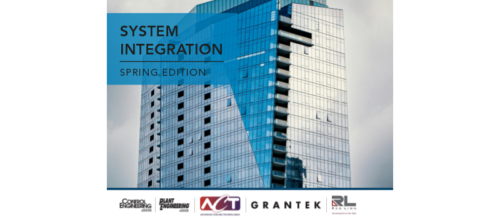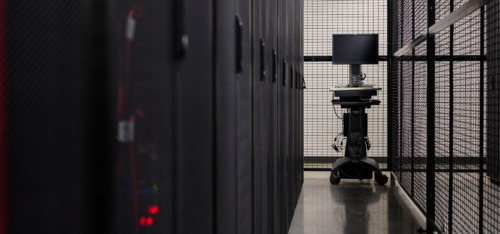Standardization for Multi-Site Implementations: Best Practices for Multi-Site Rollouts
The individual plant-system project approach of the 1990s has morphed to embrace multi-site global rollout programs. “The sheer size of global system deployments make them risky — unless you manage them properly with technology that can support them,” says Mike Grasley, director of consulting for Aseco Integrated Systems of Oakville, Ontario, Canada.
The individual plant-system project approach of the 1990s has morphed to embrace multi-site global rollout programs . “The sheer size of global system deployments make them risky — unless you manage them properly with technology that can support them,” says Mike Grasley, director of consulting for Aseco Integrated Systems of Oakville, Ontario, Canada.
Says Don Ulrich, president of Stone Technologies , a St. Louis-based system integrator: “A key challenge in rolling out systems to multiple facilities is getting every plant to feel its requirements have been heard. And that they understand how the whole system deployment will benefit them. If you don’t, it can get ugly quickly.”
Key, says Tim Sowell, vice president of Wonderware product strategy, is “to understand that it is a discovery process. You need a system architecture that enables you to go down the discovery path, starting small in getting some application functionality out there, validating and reaping benefits quickly. You need an architecture that can be easily extended to capture best practices so they can be deployed across all plants. You have to manage it from Day 1.”
Object-based Modeling
“The ArchestrA technology-based System Platform 3.0 software approach enables you to model the plant and all your requirements with object-oriented templates, allowing you to build libraries of applications that can be easily extended and reused,” says Wade Harsy, president of IPACT , a factory automation SI based in Valparaiso, Ind. “It enables you to deploy common objects that have common facilities across multiple sites. It certainly makes it scalable. The platform’s abstraction level is its greatest strength.”
The plant model is at the heart of the System Platform 3.0 software architecture and power. It provides the foundation for capturing the physical description of the global manufacturing enterprise within standard object templates. More significantly, it powers them with all the intelligence they need by embedding intelligence directly in the templates — all application logic, security configuration, I/0, graphics, messages and alarms and routing, and data storage requirements. Templates are developed once and deployed as multiple instances to individual plant servers running separate facilities.
“It enables you to build a strong template set where you can centrally standardize applications and normalize information, and then deploy instances to each site with the ability to customize the application at the local level,” says Harsy.
The tools in System Platform 3.0 software make it the central engineering space for creating uniform presentation to end users and other enterprise systems. “Best practices include not only what the deployed applications can provide — but how you use the tools,” Harsy says. “It starts with building a good set of templates that are critical to a global rollout. You can test and validate and deploy; and then leverage by evolving your templates over time. The system is very capable of supporting an evolving process.”
Encapsulating Best Practice Intelligence
The unified plant model is what ensures standardization of practices from plant to plant. People making strategic comparisons on OEE, for example, must have confidence that the data is being captured consistently across the enterprise, regardless of variety of equipment or control systems or idiosyncrasies of engrained plant preferences. “You have to have the concept of a global standard,” says Grasley. “It has to be implemented in the same way. In a non-object environment, that was very hard to do. But with objects, you create templates centrally and deploy instances that inherit those global standards at every site.”
In addition to the local instance having all the requisite intelligence embedded within it, each site can customize a template to support execution of local best practices without impacting the global standard. When multi-site comparisons are made, they’re based on the standard, enabling confidence in identification of best performance instances. Modifications from a particular site that support best practice performance can then be made in the standard template in the global platform model — and then subsequently deployed to all sites, instantly updating all sites simultaneously with the new global standard.
“One customer had 60 packaging lines running 20 different versions of a particular control system — even though all the machines were identical,” says Mike Peters, Aseco account manager. Though the company had an improvement process in place, any change to a process required repeatedly making changes to multiple systems.
“The benefit of the Wonderware System Platform 3.0 software is that it is a lot easier to maintain and enhance the system to capture performance best practices because the templates encapsulate so much functionality in each object,” says Ulrich of Stone Technologies.
Building Best Practices
The flexibility and power of System Platform 3.0 software makes the discovery process integral to global system deployment across multiple sites. “You’re constantly building up and improving best practices that you discover from having deployed a standard set of applications to multiple locations,” says Sowell of Wonderware. “The model provides you with a consistent measurement based on uniformly consistent practices– plant to plant. With each discovery, you’re adding to the standard model and then re-deploying.” As a result: “You’re always improving the model,” he says.
Where you might start, for example, with a template for quality, you can easily add and deploy additional functionality to dive deeper into monitoring processes to determine the root cause of problems. That discovery process can then lend to modification of the overall process by modifying the standard object template in the standard model.
“You need unified, consistent data to see the all information in the correct context,” Sowell says. “First you understand; then you analyze; then you take action based on what you discover. You’re constantly leveraging the lessons you learn. It enables you to embrace and absorb change.”
The process is seamless and without complex disruption to what is already in place. “You can start with gross level functionality and add to it as you gain understanding of what you need,” says Harsy. “You can propagate change across all plants with a few clicks of the mouse. Being able to make centralized modifications and deploy globally is the greatest strength of the platform. It enables you to sustain and evolve your investment.”
Says Ulrich of Stone Technologies: “the Wonderware System Platform 3.0 software concept has been steadily evolving over the last three or four years — getting better and better. It’s truly a world-class solution.”
Do you have experience and expertise with the topics mentioned in this content? You should consider contributing to our CFE Media editorial team and getting the recognition you and your company deserve. Click here to start this process.



